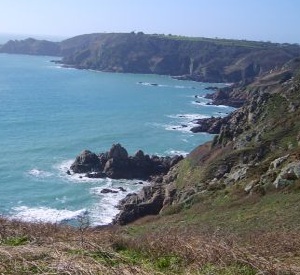
[Catherine’s Note: I originally published this piece in 2007. Because of the California and other state and local fiscal challenges, I thought I would republish]
In the early 19th century, the little British Channel island of Guernsey faced a problem. Its sea walls were crumbling. its roads were too narrow, and it was already heavily in debt. There was little employment and people were leaving for elsewhere.
Instead of going still further into debt, the island government simply issued 4,000 pounds in state notes to start repairs on the sea walls as well as for other needed public works. More issues followed and twenty years later the island had, in effect, printed nearly 50,000 pounds. Guernsey had more than doubled its money supply without inflation.
A report of the island’s States Office in June 1946 noted that island leaders frequently commented that these public works could not have been carried out without the issues, that they had been accomplished without interest costs, and that as a result “the influx of visitors was increased, commerce was stimulated, and the prosperity of the Island vastly improved.” By 1943, nearly a half million pounds worth of notes belonged to the public and was so valued that much of it was being hoarded in people’s homes, awaiting the island’s liberation from the
Germans.
About the same time that Guernsey started to fix its sea walls the town of Glasgow, Scotland, borrowed 60,000 pounds to build a fruit market. The Guernsey sea walls were repaid in ten years, the fruit market loan took 139. In the first part of the 20th century, Glasgow paid over a quarter million pounds in interest alone on this ancient project.
How did Guernsey avoid the fiscal disaster that conventional economics prescribed for it? First and foremost by understanding that when you build roads or sea walls or colleges or houses, you are not reducing your society’s wealth. In fact, if you do it right, you are creating something that will add to its wealth. The money that was created was simply backed by public works rather than gold or “full faith and credit.” It was, in fact, based on something more solid than the dollar bills in our wallets today. In contrast, tacking on an interest charge to public works — as we do in the US — creates no new wealth, but merely transfers claims on existing wealth from debtors to creditors.
